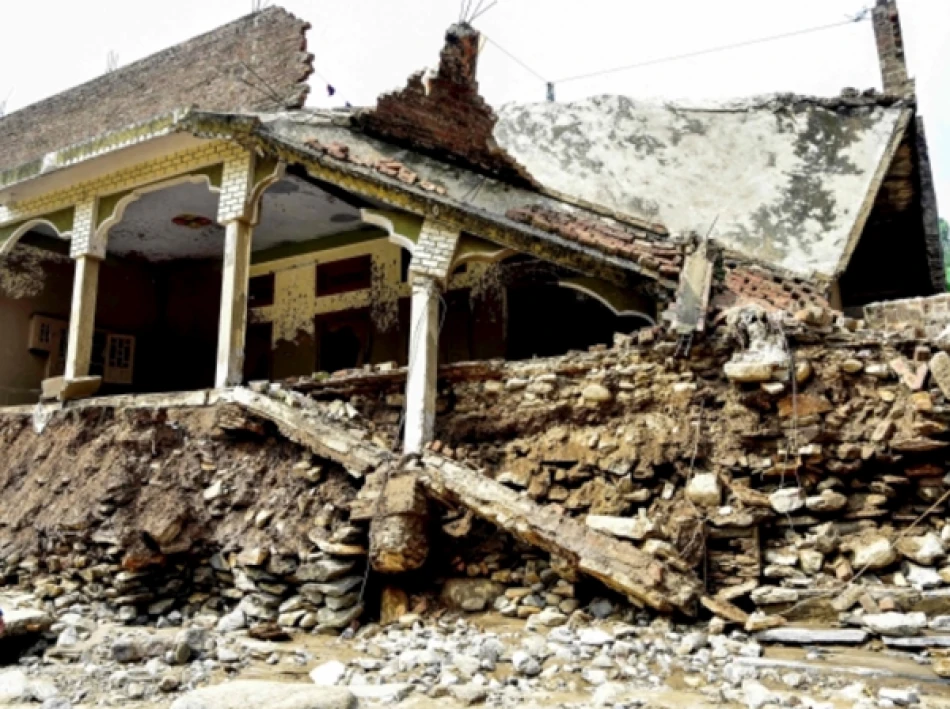
Pakistan Floods Tragedy: Death Toll Rises to 344, Devastating Communities
Pakistan's Northwest Faces Deadly Monsoon Crisis as 344 Die in 48-Hour Flood Catastrophe
Pakistan's Khyber Pakhtunkhwa province is grappling with one of its deadliest monsoon disasters in recent memory, as relentless seasonal rains triggered devastating floods that killed 344 people within just 48 hours. The catastrophe has forced authorities to declare six districts disaster zones while rescue teams continue searching for survivors amid widespread destruction that has paralyzed the region's infrastructure.
Unprecedented Scale of Destruction
The monsoon-driven floods have wreaked havoc across Khyber Pakhtunkhwa, with at least 137 people reported injured as homes collapsed and torrential waters swept away residents, livestock, and vehicles. The sheer magnitude of destruction compelled the provincial government to officially declare six districts—Buner, Bajaur, Swat, Shangla, Mansehra, and Battagram—as disaster-affected areas.
Thousands of homes have been destroyed, while major roads, bridges, and connecting routes have been washed away, creating a logistical nightmare for rescue and relief operations. Emergency responders are now racing against time to locate survivors trapped beneath mud and debris.
Pakistan's Monsoon Vulnerability Exposed
Climate Change Amplifies Traditional Weather Patterns
This latest disaster underscores Pakistan's extreme vulnerability to monsoon flooding, a recurring crisis that has intensified in recent years due to climate change. The country, which contributes less than 1% of global greenhouse gas emissions, ranks among the world's most climate-vulnerable nations according to international assessments.
The current floods echo the devastating 2022 monsoon season that submerged one-third of Pakistan, killed over 1,700 people, and caused economic losses exceeding $30 billion. That disaster affected 33 million people and highlighted the country's inadequate disaster preparedness infrastructure.
Geographic and Economic Factors
Khyber Pakhtunkhwa's mountainous terrain makes it particularly susceptible to flash flooding, as steep valleys channel rainwater into devastating torrents that can overwhelm communities within minutes. The province's proximity to the Hindu Kush mountain range creates natural funnels that amplify the destructive power of seasonal rains.
The region's economic challenges compound the crisis, as many residents live in poorly constructed homes that cannot withstand extreme weather events. Limited early warning systems and inadequate drainage infrastructure further exacerbate the human toll when disasters strike.
Broader Implications for Pakistan's Stability
Economic Strain on a Struggling Nation
These floods arrive at a particularly challenging time for Pakistan, which is already grappling with severe economic difficulties including high inflation, currency devaluation, and ongoing negotiations with international lenders. Reconstruction costs will likely strain government resources and potentially delay other development priorities.
The destruction of agricultural areas and livestock—critical to the local economy—threatens food security and rural livelihoods in a region already marked by poverty. This economic disruption could fuel migration to urban areas, creating additional social pressures.
International Response and Climate Justice
Pakistan's repeated monsoon disasters have become a rallying point for climate justice advocates who argue that wealthy nations should provide more substantial support to countries bearing the brunt of climate change impacts they did little to cause. The 2022 floods prompted international pledges of over $10 billion in reconstruction aid, though delivery has been slower than hoped.
This latest catastrophe will likely renew calls for more robust international climate financing and loss-and-damage mechanisms to help vulnerable countries adapt to increasingly severe weather patterns. Pakistan's experience serves as a stark reminder that climate change is not a future threat but a present reality requiring immediate, coordinated global action.
 Layla Al Mansoori
Layla Al Mansoori







